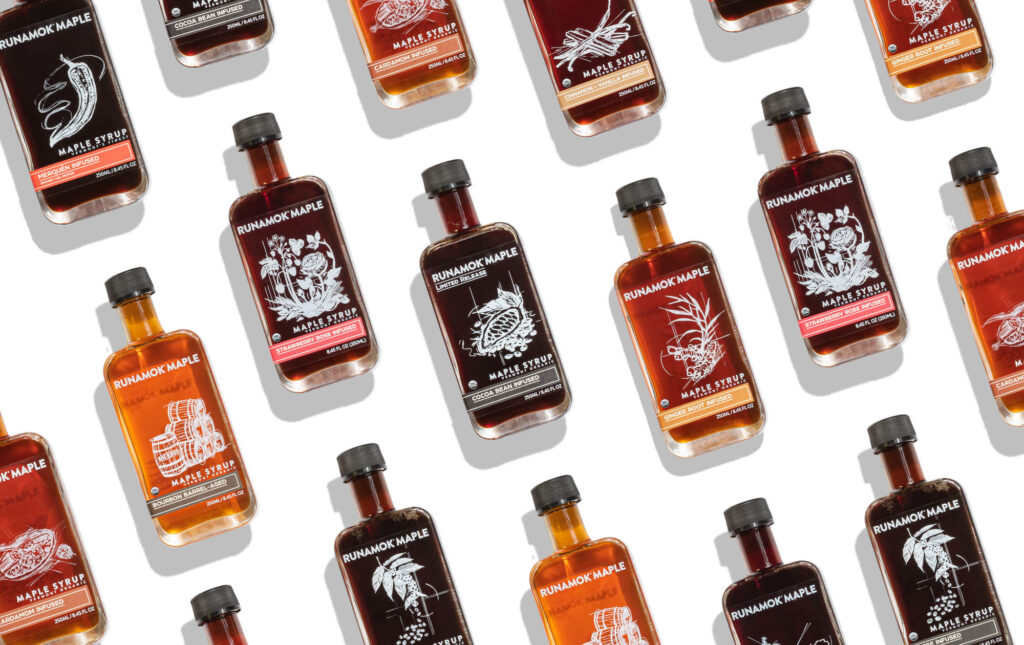
Maple syrup has been beloved and shared by Vermonters for generations, but not everyone has caught on. Discovered by Native Americans and passed down through generations, maple syrup is quickly becoming one of the most common natural sweeteners in the world.
Everyone knows how good maple syrup is on pancakes, but few know how many other uses it has. Maple syrup is great in coffee, as a marinade or rub on any kind of meat, in baking, for cocktails, in a vinaigrette, and so much more.
Now, more than 50% of maple syrup sold in the US each year comes from Vermont, where more than 1,500 sugarhouses produce over 2 million gallons of syrup each year. As part of Vermont’s working landscape economy, the maple industry is a prime example of agriculture and conservation coexisting. Sugarmakers are responsible for maintaining the health of their forests to ensure their businesses continue to thrive for many years to come.
At Runamok, we manage over 1,000 acres of sustainable forest and produce several thousand gallons of syrup every year. But we go beyond the traditional pure maple syrup that Vermont is so well known for, and we’re taking maple syrup to another level. Our smoked and infused maple syrups, as well as our cocktail mixers and bitters, are made with innovative processes and high quality, organic ingredients. We’re showing the world that maple is for more than pancakes.
What is Pure Maple Syrup?
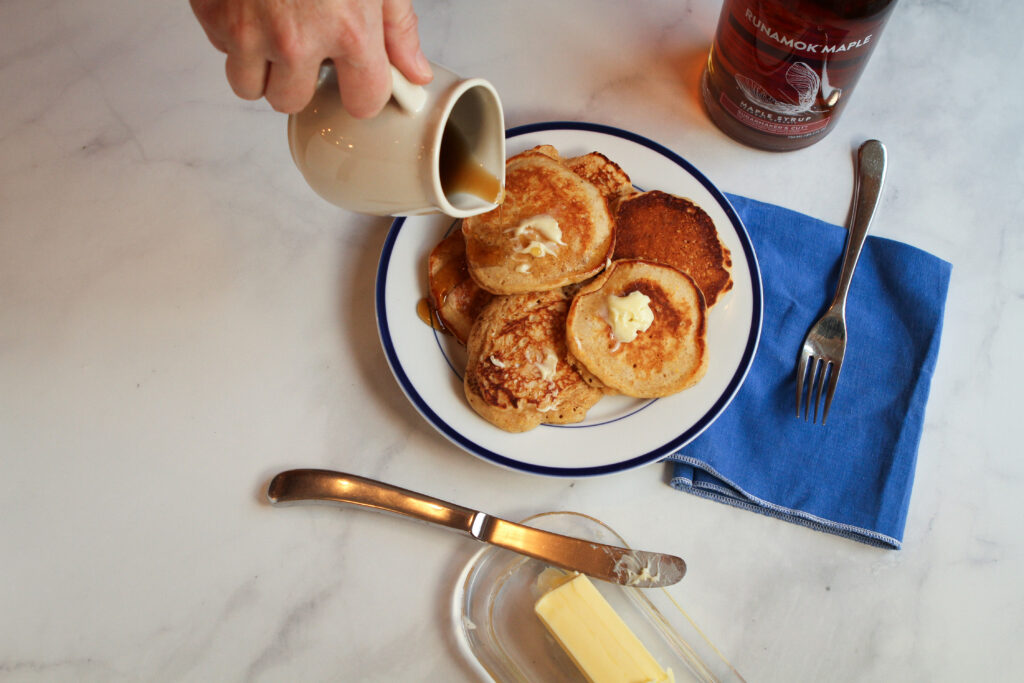
The term “pure maple syrup” is simply pure maple sap boiled down to syrup. Sap is a clear fluid found in trees that transports nutrients throughout the tree. Maple sap is made up mostly of water, but also contains 1-3% sugar along with some key nutrients. Pure maple syrup is a highly concentrated form of pure maple sap.
Even within this tight definition of pure maple syrup, the taste and quality can vary significantly, as the product of the sap can change depending on environmental factors.
Every year, our sugarmakers identify the most flavorful barrels of syrup and reserve them for our Sugarmaker’s Cut, our take on pure maple syrup.
What Makes Maple Syrup Organic?
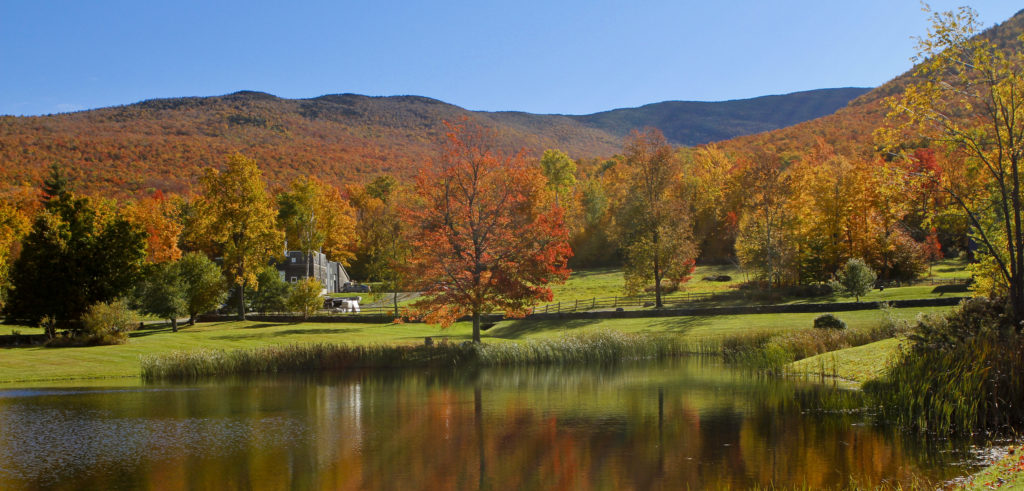
For real maple syrup, there is only one chemical that gets anywhere near syrup production and that is the defoamer. When the sap is at a raging boil on its way to becoming syrup, a sugarmaker needs to control the foam in the pan or end up with a mess.
Non-organic producers use a food-safe chemical defoamer and organic producers use organic safflower or canola oil. For either operation, it is a mere drop of oil per hundreds of gallons of syrup.
The real difference in organic vs. non-organic maple syrup is the assurance that an organic producer has treated his or her woods not as a sap factory but as a living ecosystem.
There are many rules of woodland conservation that an organic producer must follow, from tree-size for tapping, to biodiversity, to water quality assurance, and a rigorous audit every year certified by the Northeastern Organic Farmer’s Association (NOFA).
The maple syrup we produce at our sugarbush is proudly certified organic and kosher. Additionally, we go beyond the NOFA requirements to also ensure our sugarbush is bird-friendly.
Grading Maple Syrup: What’s the Difference Between Grade A and Grade B?
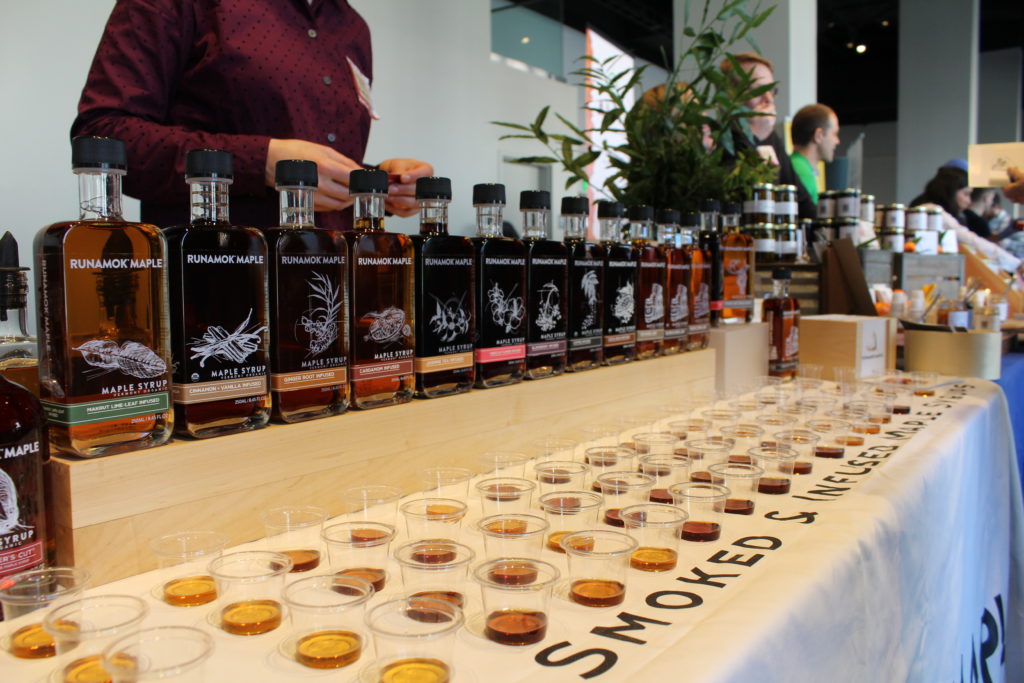
Maple Syrup grading has been the source of much confusion among consumers. Previously, Grade A Maple Syrup was produced earlier in the season and had a delicate flavor with an amber color. Grade B syrup was produced later in the season, producing a thicker, richer syrup much darker in color.
Due to the previous ranking system being confusing and misleading, Maple Syrup is now separated among four different Grade A varieties:
- Grade A: Golden color with delicate taste
- Grade A: Amber color and rich taste
- Grade A: Dark color and robust taste
- Grade A: Very dark and strong taste
How to Make Maple Syrup: Turning Maple Sap into Maple Syrup
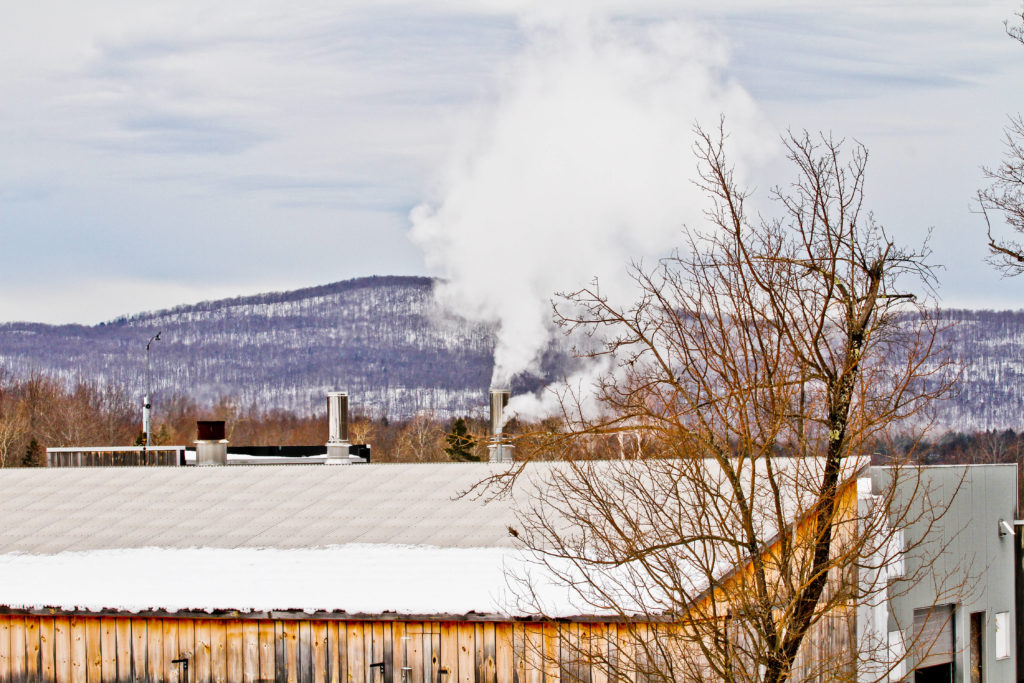
Here in maple country, we take for granted that everyone knows how maple syrup is made. Most Vermont kids will visit a sugarhouse at least once in their elementary school years and given the small state, most people know someone connected to the industry. This is why we might stand there with blank stares if an innocent out-of-stater asks if you can make maple syrup year-round (no), or if we add sugar to it (big no).
With that in mind, we are going to make all of you honorary Vermonters by breaking down the process of how maple syrup is made.
Step 1: Sugaring Season & Tapping Trees
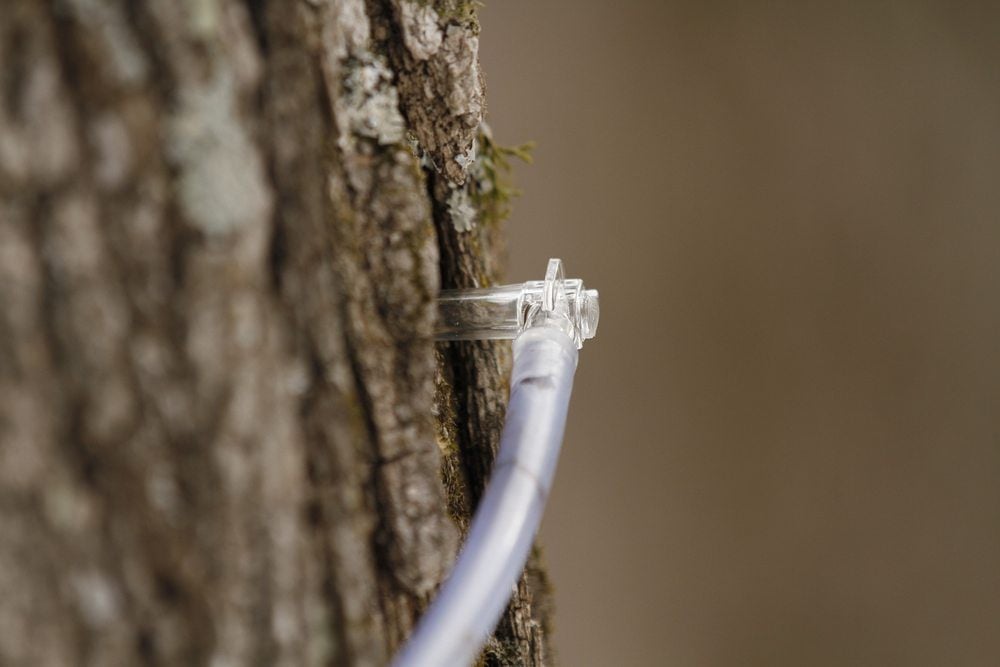
We will start with tapping the trees. Every year the trees are newly tapped for the season. Previous to the 1980s, sugarmakers would drill a hole in the tree, hammer in a spout and hang a bucket on it. Then they would wait for the sap to run and people with either horses or 4-wheelers would collect the sap in a container, on a sled and bring it to the sugarhouse. While very picturesque, this method was only practical if you had a few hundred trees to tap.
Many sugarbushes are much bigger these days and all but a few use a network of tubing that starts directly from the tap in the tree and drains to a collection point. Our sugarbush in Cambridge consists of a contiguous section of the area on Mt. Mansfield known as Thunder Basin and all 1,000 acres of sap coming out of the trees drains directly into the sugarhouse. Over 600 miles of tubing was set up to reach all of the maples over those acres and the terrain varies from sloping knoll to near-vertical embankments.
Setting up the tubing in a sugarbush can take months and is usually done in the off season. Once it is up, it will stay in place for many years until it needs replacing.
Read more about how we tap maple trees.
Step 2: Reverse Osmosis
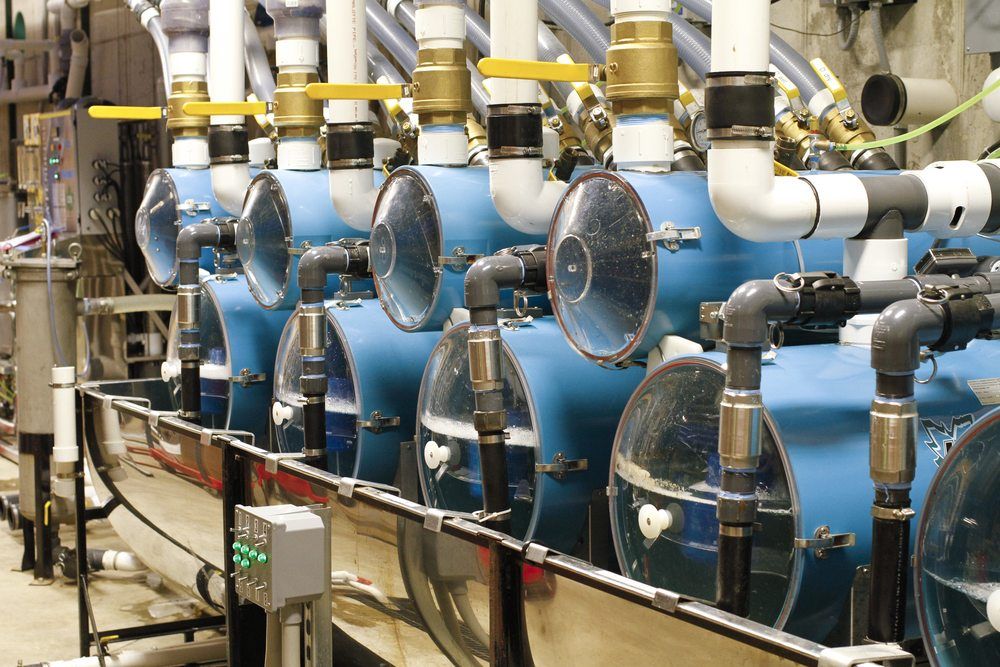
Once the sap is in the sugar house it is time to turn it into syrup.
The first step is to concentrate the sap. We run the sap through a reverse osmosis machine, which removes 90% of the water. A reverse osmosis machine (RO) works by using pressure to push the sap through a semipermeable membrane. Pure water, called the permeate, is pushed through, while sugar and minerals, too large for the membrane, stay put in the concentrate.
Using Reverse Osmosis reduces our energy consumption by 90% because producing maple syrup is essentially the process of boiling off the excess water. Less water = less boiling time = less energy consumption.
Step 3: Boiling
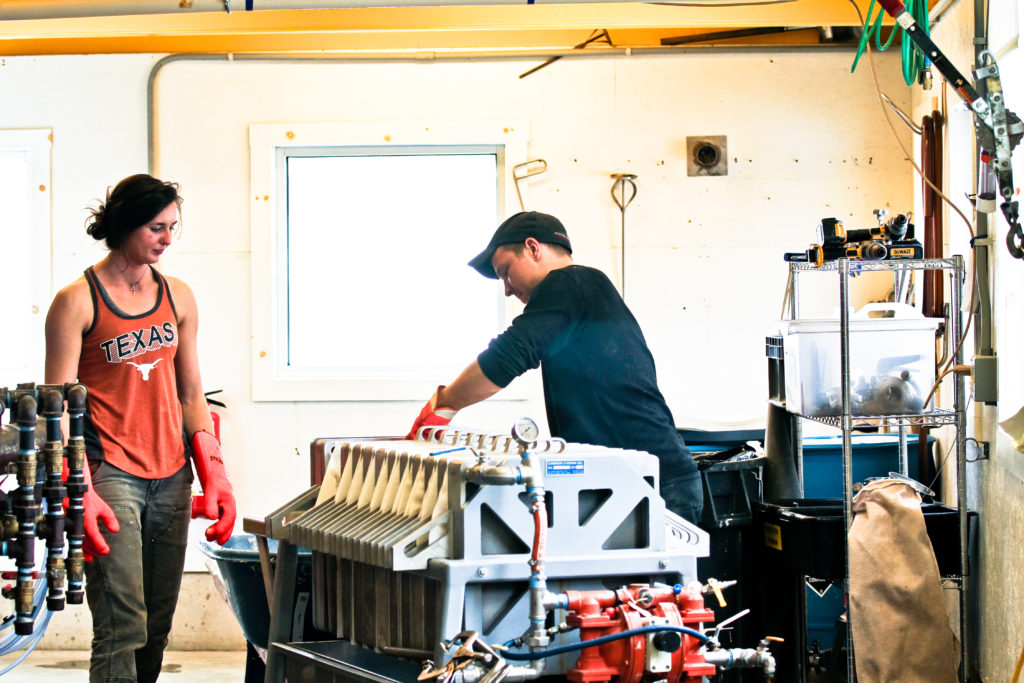
Once it has been sent through the RO, it is time to boil. For many years, sugarmakers used wood which was burned in an arch under the evaporation pan. While wood is often a plentiful resource for people who work in a forest, using wood has its drawbacks. The main one is that the temperature is difficult to control. Also, someone needs to be tending the fire full time until the boil is done.
For the amount of sap that we process, using wood is not a realistic option for us. A newer option is to use an oil fire, which is also applied directly to the bottom of the pan. It can be more controlled and easier than wood but there is still danger of scorching the pan.
We started our operation with an oil-fired pan but a friend of ours who is an engineer and fellow sugarmaker suggested using steam. What a difference! Not only is it more efficient but there is no chance of burning. The system works by running steam through coils that lie directly in the sap.
When we first switched to steam-boiling, we were concerned that the flavor might be different, but instead found it to be even better. Subtle notes of honey and apple came through, as well as more common ones like caramel and brown sugar. In addition, boil times are considerably shorter which makes the sugaring season a bit more manageable for the sugarhouse crew.
Read more about how we use reverse osmosis and steam-boiling to concentrate our maple sap.
When is Maple Sugaring Season?
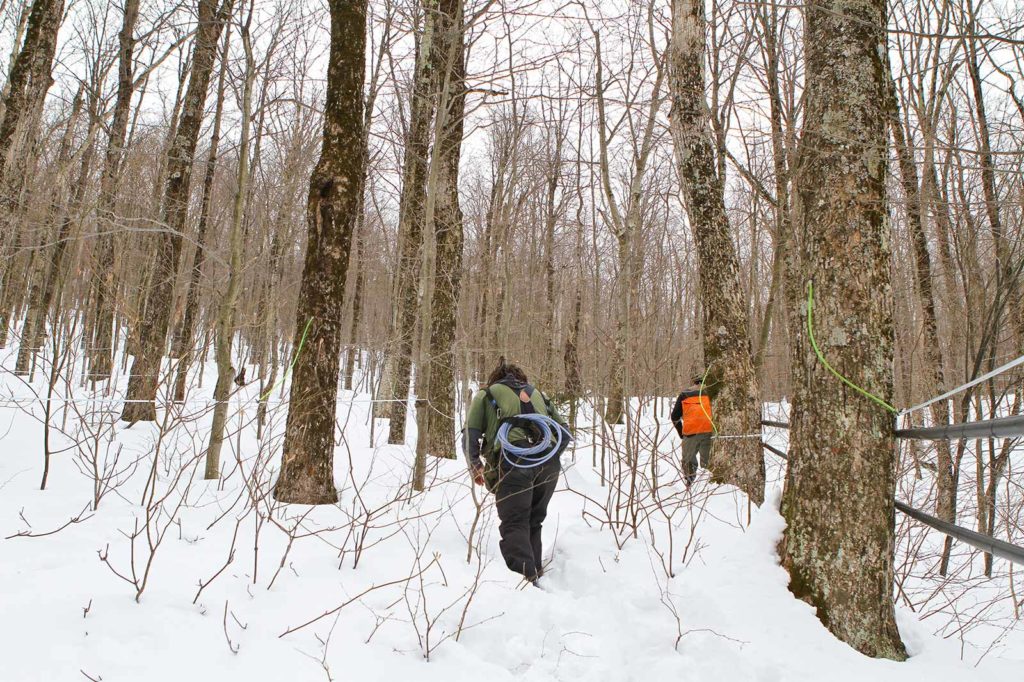
The period of time when sap starts flowing from within the maple trees is referred to as the sugaring season. The sugaring season is triggered by changes in the weather, and usually lasts about 4-6 weeks, occurring sometime between February and April.
For the tree to produce sap, temperatures need to cycle between above and below freezing. Traditionally, March was the month that most reliably saw those conditions and that is why it is known as the peak of sugaring, with festivals and open houses always scheduled to celebrate. In the past decade, however, climate change has upended the usual weather patterns and there is no such thing as typical. Some years have seen the biggest runs in February, with the whole month of March frozen solid. Others have seen the bulk of runs in April. The best we can do to prepare is be ready at the end of January and then wait and see.
Read more about how we collect our sap during sugaring season.
Maple Syrup vs Artificial Pancake Syrup
Many people mistakenly confuse maple syrup with pancake syrup, but these are two very different things. Pure Maple Syrup is 100% maple tree sap, boiled down to a thicker consistency.
On the other hand, pancake syrup is primarily corn syrup with artificial maple extract, caramel coloring, and artificial flavoring. It is a highly processed product and does not contain the same levels of nutrients found in real Maple Syrup. The pancake syrup commonly found at grocery stores is an artificial imitation.
The History of Maple Syrup
Maple syrup as we know it originated when Indigenous communities, namely the Algonquin people of North America’s northern woodlands, tapped into sugar maples each Spring and collected the sap that flowed out in baskets.
Originally, the sap was used as a cooking liquid to braise meat such as fish and squirrel. Soon after, natives also began processing the sap into sugar and syrup. They perfected the process long before European settlers arrived in the Americas. By the time early settlers arrived, maple syrup was a valuable commodity among indigenous communities. Early Europeans learned how to harvest maple sap from Indigenous Americans, and added their own methods to process maple sap more efficiently.
Does Maple Syrup Go Bad? How Long Does Maple Syrup Last?
If maple syrup is unopened, it can be stored in the pantry for about a year. Once opened, real maple syrup should be stored in the refrigerator, for up to one year.
Want to hear more from us about maple syrup? Sign up for our email newsletter or shop our best-selling maple products.
